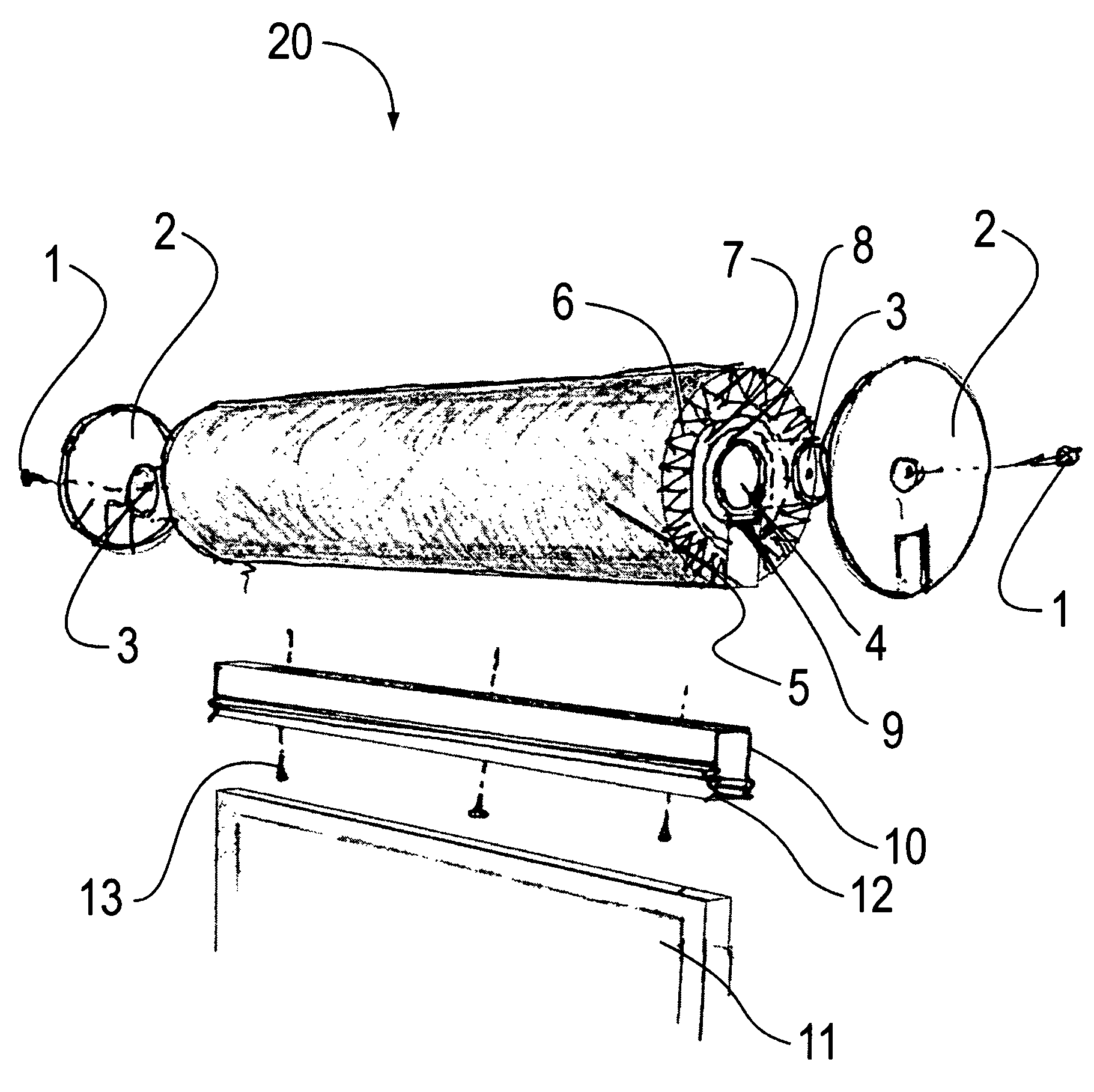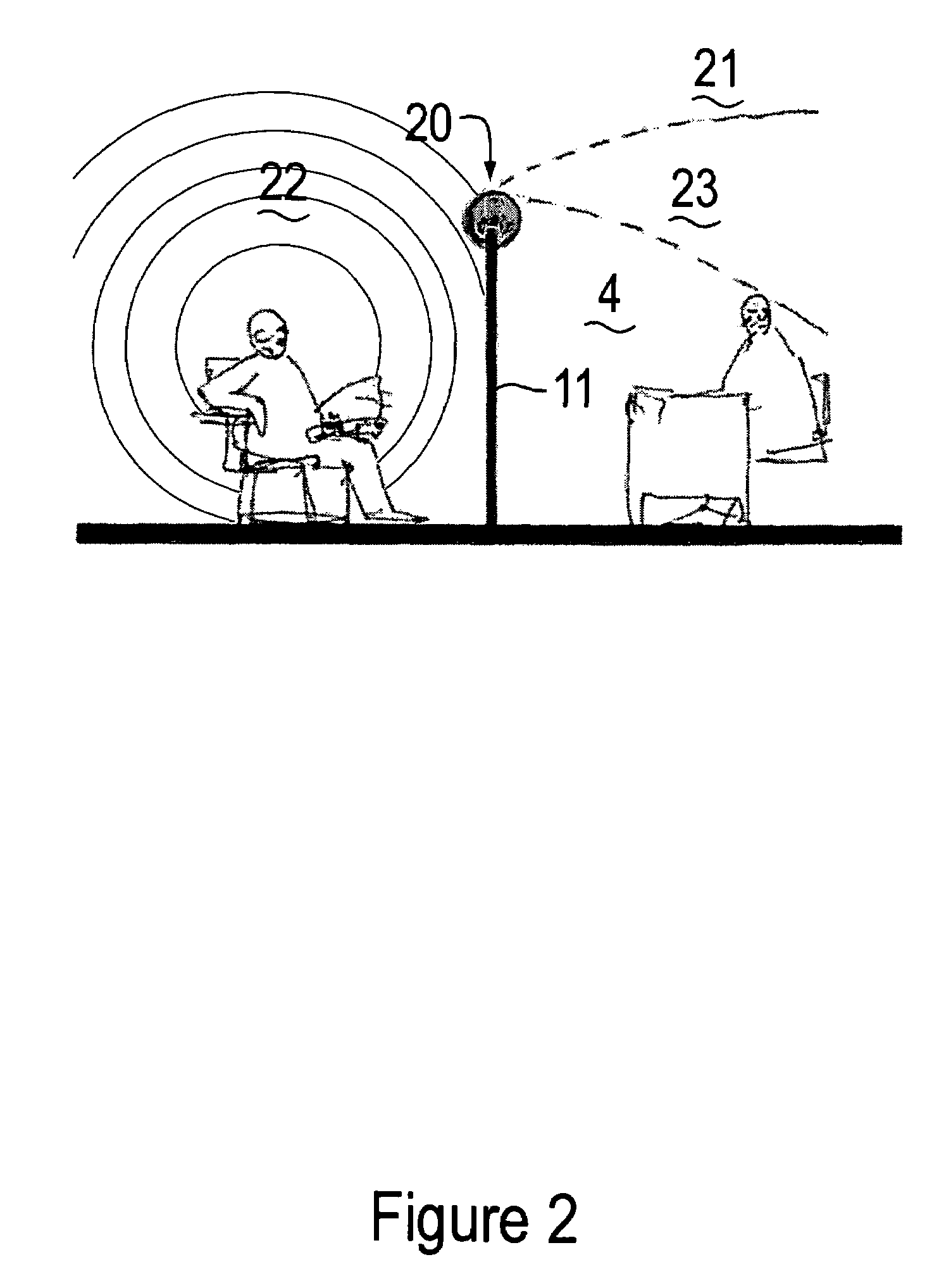Acoustic device for use on office partitions
a technology for acoustic devices and partitions, which is applied in the direction of walls, flooring, construction, etc., can solve the problems of intruding into the space of cubicles, less stable, etc., and achieve the effects of improving the acoustical efficacy of partitions, convenient installation, and low manufacturing cos
- Summary
- Abstract
- Description
- Claims
- Application Information
AI Technical Summary
Benefits of technology
Problems solved by technology
Method used
Image
Examples
Embodiment Construction
)
[0013]FIG. 1 is an exploded view showing the components and construction of the sound abatement acoustic device 20. The structural core or septum of the device consists of a length of 8″ diameter pipe 4 which may be plastic, fiberglass or lightweight metal. Attached to the bottom of the core 4 is a core channel 9 that provides a flat mounting surface for the mounting channel 10. Fastened to core channel 9 with adhesive, rivets, or screws 13 is mounting channel 10. Mounting channel 10 is bent with small inward curves at the bottom of each leg 12 which provide a spring action. Wrapped around the pipe core 4 is ⅞″ thick 6# an inner layer 8 of fiberglass having a thickness from about ½″ to about 1″ and a density from about 2 to about 8 pounds per cubic foot. In practice it has been found that an inner layer 8 having a thickness of ⅞″ and a density of 6 pounds per cubic foot works particularly well. There is a gap in the inner layer 8 so that the mounting channel 10 is exposed. Wrapped ...
PUM
 Login to View More
Login to View More Abstract
Description
Claims
Application Information
 Login to View More
Login to View More - R&D
- Intellectual Property
- Life Sciences
- Materials
- Tech Scout
- Unparalleled Data Quality
- Higher Quality Content
- 60% Fewer Hallucinations
Browse by: Latest US Patents, China's latest patents, Technical Efficacy Thesaurus, Application Domain, Technology Topic, Popular Technical Reports.
© 2025 PatSnap. All rights reserved.Legal|Privacy policy|Modern Slavery Act Transparency Statement|Sitemap|About US| Contact US: help@patsnap.com



